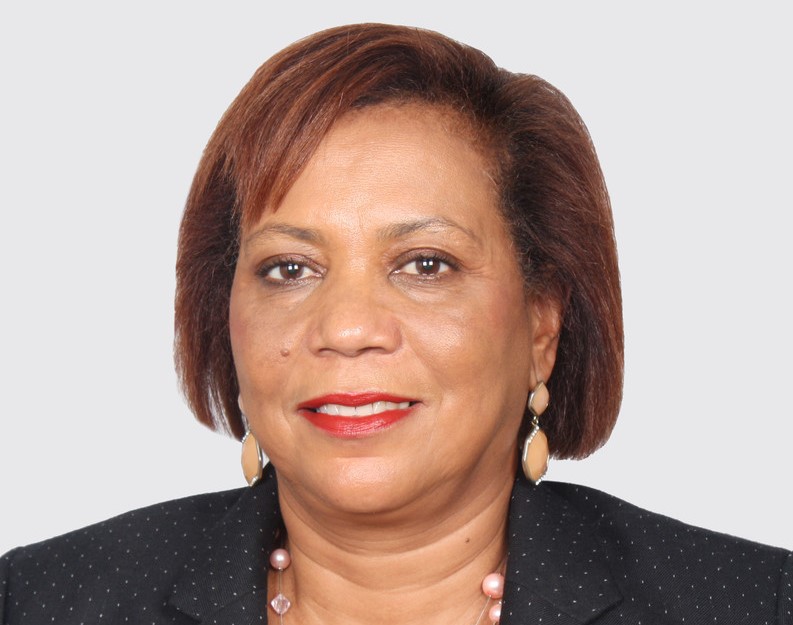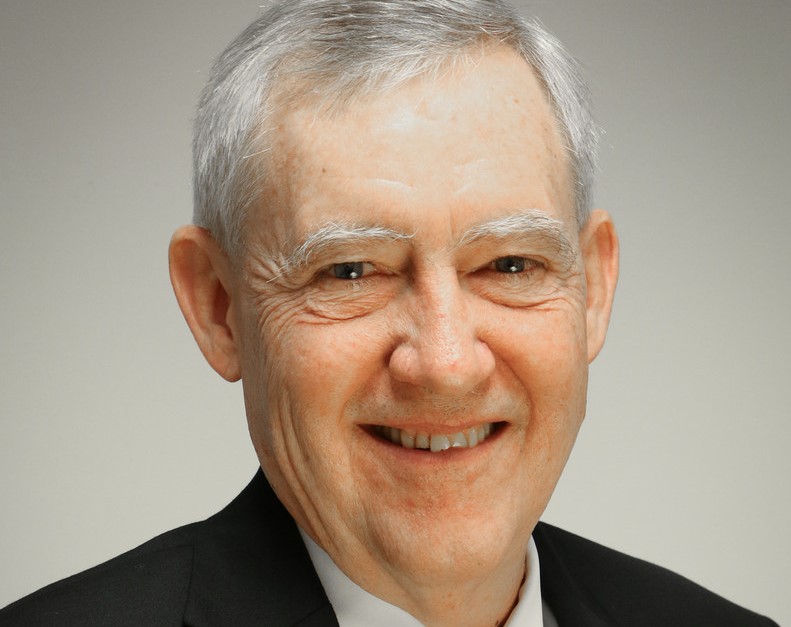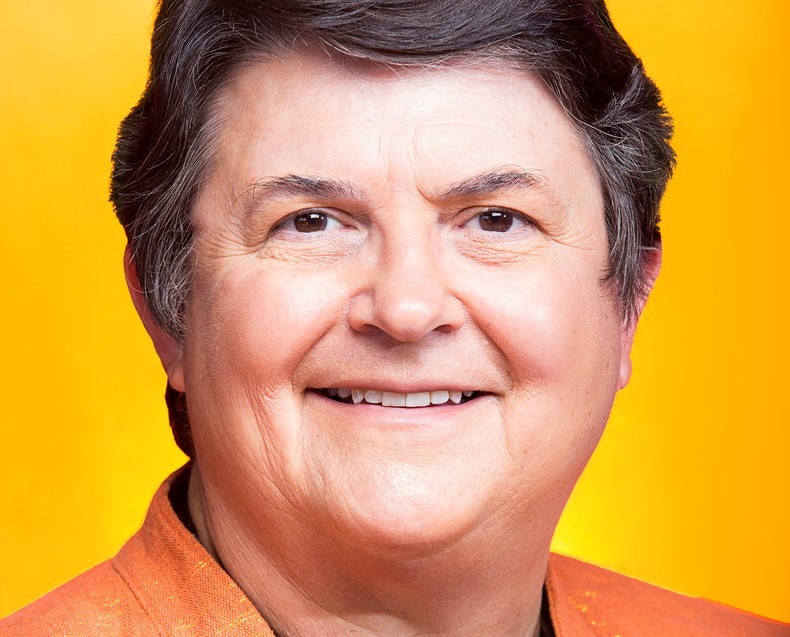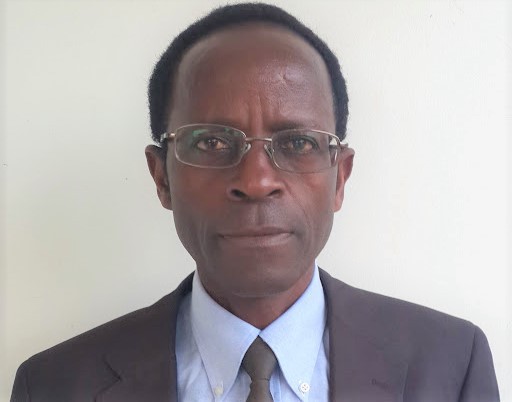
Dr. Maria Andrade
CAPE VERDE

Dr. Howarth Bouis
UNITED STATES

Dr. Jan Low
UNITED STATES

Dr. Robert Mwanga
UGANDA
"Let food be thy medicine," a quote attributed to Hippocrates over 2,400 years ago, best captures the ground-breaking achievements for which the four distinguished 30th Anniversary World Food Prize Laureates honored in 2016 - the development and implementation of biofortification, breeding critical vitamins and nutrients into staple crops, thereby dramatically reducing "hidden hunger" for millions.
Maria Andrade, Robert Mwanga and Jan Low: The Orange-Fleshed Sweet Potato
Improving Health and Uplifting Lives in Africa through Agriculture
To counter the devastating effects of Vitamin A deficiency, which contribute to high rates of blindness, diarrhea, immune system disorders, and premature death in children and pregnant women in Africa, Maria Andrade, Robert Mwanga, and Jan Low undertook a multi-year effort to develop disease-resistant, drought-tolerant, high yielding varieties of orange-fleshed sweet potato (OFSP) that can flourish in the variable soils and climatic conditions found in Sub-Sarahan Africa. It is especially meaningful to note that World Food Prize founder and Nobel Peace Prize Laureate Dr. Norman Borlaug went to Africa in 1986 to combat food insecurity by implementing the Green Revolution’s high-yield agriculture technologies.
A U.S. Agency for International Development (USAID) official has commented that Andrade, Mwanga, and Low are pioneers whose early efforts in breeding and disseminating the orange-fleshed sweet potato built a bridge from agriculture to nutrition and health, helping to forge a new alliance among agronomists, plant breeders, nutritionists, and public health experts that has changed the way the international development community works.
Collaborating as team at CIP starting in 2006, plant breeders Andrade and Mwanga, and agricultural economist Low fully demonstrated the approach that had been advanced by Bouis -- that a vitamin enriched biofortified crop could provide positive benefits to human health and childhood development. With resources and support from Bouis’s HarvestPlus, along with USAID, the Bill & Melinda Gates Foundation and other donors, the CIP team carried out breeding programs of orange-fleshed sweet potato varieties in Mozambique and Uganda, and later in 10 other African countries.
Of special significance to the World Food Prize is the fact that it was in Des Moines at the Borlaug Dialogue on October 15, 2009, as Bill Gates launched his campaign to uplift African agriculture, that the Gates Foundation also announced a $21 million grant for implementation of a project titled “Sweetpotato Action for Security and Health in Africa (SASHA),” led by CIP and its multiple partners.
Going against the general tide of reliance on capsule supplementation to treat vitamin and mineral deficiencies, the CIP team showed that consumption of OFSP could prevent Vitamin A deficiency and that behavioral change by farmers, distributors, and consumers could be fostered by applying strategies aimed at convincing them to plant and consume this nutritious food.
A crucial aspect of their integrated approach has been to enhance the OFSP breeding programs with extension-style agronomy and nutrition education to farmers and consumers together with implementing effective marketing and dissemination strategies. This multi-sectoral approach has been successful at delivering the scientific breakthroughs achieved in the lab directly to the farmers’ fields and onto their tables, and ensured that OFSP would be incorporated into the diets of rural families, resulting in significantly reduced levels of micronutrient deficiencies, hidden hunger, and disease for millions across Sub-Saharan Africa.
To convince consumers to eat OFSP, the CIP team developed the concept of demand creation campaigns, which branded the orange color a sign of healthy Vitamin A-rich foods. The campaign, called “the sweet that gives health,” included songs, decorated t-shirts and capulanas (wrap-around clothes decorated with OFSP), all highlighting this slogan.
Full Biograpy
Dr. Maria Andrade
Maria Andrade’s OFSP breeding research began in 1997 in drought-prone areas of Sub-Saharan Africa with intensive adaptive trials that led to the release of nine drought-tolerant varieties distributed to farmers in Mozambique in 2001. Her “value-chain” approach incorporated both socio-market and agro-processing strategies to ensure a sustainable program for the long term to address food insecurity, malnutrition, and income generation.
With USAID support, Dr. Andrade conducted the first large-scale field testing of 58 OFSP varieties from the U.S., China, Kenya, and Tanzania, and was able to identify eight varieties with high yields. She and the Mozambique government partnered with USAID again in 2000 following a devastating flood in Mozambique to distribute these top-yielding varieties to 123,000 households. Andrade has also partnered effectively with the Mozambique Ministry of Agriculture, and Bouis and HarvestPlus. Her passionate advocacy has resulted in the OFSP program in Mozambique becoming what one donor described as the “calling card” for biofortification work in Sub-Saharan Africa.
Andrade was born in 1958 in Sao Filipe Fogo, Cape Verde Islands, which lie off the coast of West Africa, when that country was still a colony of Portugal (it gained independence in 1975). Her father worked on the shipping docks and her mother was a housewife, raising Maria and her two sisters and seven brothers. Even though her parents had little formal schooling, education was an important part of the family culture as this was seen as a means to a secure future. In that regard, after finishing primary school in Fogo, she went to live with an older brother on Santiago Island from 1972-78 so that she could attend a good high school. After graduating, she taught high school math and science for two years in her home country before being identified by USAID to go to college in the United States, where she studied agronomy at the University of Arizona with support from an African American Institute scholarship.
Maria received her B.Sc. in 1984 and M.Sc. in Plant Genetics in 1985 from the University of Arizona. With support from USAID, she earned her Ph.D. in Plant Breeding and Plant Physiology from North Carolina State University in 1994. A mentor during that time helped orient her efforts toward assuming a leading role in improving food security in the developing countries of Africa. She developed a deep interest in biofortified crops after working on root crops in 1985 and conducting her Ph.D research on the sweet potato, which, she learned, had the potential of providing significant nutritional benefits to malnourished children and women.
A turning point in Maria’s career occurred when she was given the opportunity to join the International Institute for Tropical Agriculture and work in Southern Africa. This exposed her to the international agricultural research environment, broadened her perspective, and showed her the important role she could play in food security. Her interest in this area was reinforced after learning that nearly 70 percent of the children in Mozambique suffered from vitamin A deficiency, and her subsequent opportunity to work in that country as a plant breeder of biofortified OFSP.
Dr. Robert Mwanga
Robert Mwanga was the driving force behind making sweet potato research a priority in Uganda starting in the mid-1980s, which resulted in the white sweet potato (with low or no Vitamin A content) largely being replaced by Vitamin A-rich OFSP in the diets of the rural poor. His breeding research, mentoring of scientists, and capacity building resulted in the dissemination of new high-yielding, pest- and disease-resistant OFSP varieties in Uganda and throughout East and Central Africa.
From 1986 to 1990, he established and implemented the Roots and Tuber Crops Program at the Namulonge research facility in Uganda, receiving support from USAID. Eventually, sweet potato breeders and technicians from 10 Sub-Sarahan African countries came to his program for training to improve their breeding skills. His efforts in expanding and strengthening the work at the Namulonge facility made it the sweet potato breeding model for other countries in the region.
Like Andrade in Mozambique, Mwanga has been involved in many diverse aspects of the OFSP value chain, including genetics, breeding, developing seed systems, and education of households in regard to nutrition. Of special note is that Mwanga succeeded in breeding high-yielding OFSP varieties in Uganda that also had resistance to a devastating virus. Between 1995 and 2013, his program released 20 OFSP varieties.
Mwanga also recognized the importance of societal and behavioral influences on food selection and consumption by the rural population, and he therefore worked diligently to breed a dry-fleshed consistency, less sweet OFSP that would appeal to consumers, who had for decades previously favored indigenous white or yellow sweet potato varieties that have minimal or no Vitamin A content. His new varieties have been grown and disseminated in Uganda and Kenya to show the feasibility and effectiveness of biofortified Vitamin A-rich OFSP for increasing maternal and child vitamin A intake and nutritional status.
It was important, as well, to persuade farmers of the livelihood and nutritional benefits for their families of growing OFSP. To that end, he combined higher yield traits with virus tolerance and blight resistance in the plants, which increased adoption among farmers. In 2008, he became the International Potato Center’s lead OFSP breeder for East Africa, and by 2014, more than 30 percent of the farmers in Uganda were growing the OFSP varieties that he developed.
He was born in 1954 in a village called Budhabangula in Uganda. Robert and his ten siblings were raised on a 20-acre farm near Busota in Kamuli District where the family livelihood was derived from growing coffee and cotton as cash crops along with a variety of food crops, including sweet potato, maize, groundnuts, beans, sesame, ginger and various fruits and vegetables.
Robert was at first sent to a primary school four miles from his home. He walked there and back in the company of two of his sisters. He later attended different primary schools closer to home through five levels of school and finished at SDA Bugema Primary School, living with an older sister and her husband 108 miles from his home. He was an excellent student, earning a government scholarship to attend one of the best high schools in Uganda where he studied Biology, Chemistry, Geography, Fine Arts, and Math -- and passed with flying colors.
He then attended Makerere University in Uganda’s capital city Kampala – also on a government scholarship – and studied Botany, Zoology, and Geography, graduating with honors in 1978. He was hired as a root crop breeder at Kawanda Research Station, but this was during the times of civil unrest during the rule of the dictator Idi Amin, and the laboratories and personnel had been decimated by draconian funding cuts. Robert left Uganda in 1983 to work at the International Institute for Tropical Agriculture (IITA) in Nigeria – where he joined a team of root crop breeders for six months.
He began his graduate training at the University of the Philippines at Los Banos, earning an M.S. in 1986. Following that, after several years spent back in his war-torn Uganda, Mwanga was able to obtain his Plant Breeding and Genetics Ph.D. at North Carolina State University (1996- 2001), with a grant from the McKnight Foundation. One of the main objectives of his graduate research was to breed for increased beta-carotene in sweet potato plants. That experience set him on a career path of developing biofortified OFSP and working in Uganda to fight food insecurity and malnutrition.
Dr. Jan Low
Jan Low, as CIP’s Regional Leader for Africa, recognized the potential of OFSP to combat Vitamin A deficiency among young children in Sub-Saharan Africa. To establish an evidence base that nutritionists could rely on, she conducted a major study among poor African communities in 2005—with support from USAID, the Micronutrient Initiative, and the Rockefeller Foundation—demonstrating that consumption of orange fleshed sweet potato (OFSP) led to a 15 percent decline in Vitamin A deficiency in children who consumed a daily portion of OFSP compared to children who did not. Armed with that knowledge, she led a seminal study under a HarvestPlus “Reaching End Users” project that was concerned with how to effectively deliver OFSP to poor and vulnerable households. This study firmly established that it was possible to cost-effectively scale up using the pioneering integrated agriculture-nutrition-marketing approach.
In 2006, Low focused research investment on “breeding in Africa for Africa” that was centered in a new science-based program in Mozambique with her team member Andrade to select OFSP varieties that had greater drought tolerance and the more favored dry-fleshed consistency.
She then developed a ten-year project called “Sweetpotato for Profit and Health Initiative--SPHI” (2009—2019), with the goal to favorably position sweet potatoes in the food economies of seventeen African countries, particularly in expanding urban markets, to reduce child malnutrition and improve smallholder incomes.
In 2010, she became the leader of the SPHI and also project manager of its foundation project, the Sweet Potato Action for Security and Health in Africa, or SASHA, project, with support from the Bill & Melinda Gates Foundation. She spearheaded SASHA’s collaboration with the Alliance for a Green Revolution in Africa to train the next generation of sweet potato breeders. Under Low’s leadership, and with the support of HarvestPlus and other donors, CIP has expanded its OFSP biofortification research presence to 12 African countries.
Low was born in 1955 in Denver, Colorado, where she attended public schools through high school. She was especially encouraged and inspired by a math teacher in the eighth grade and a Spanish teacher in the eleventh grade. Jan also came to greatly admire the work of Jane Goodall, which fostered her interest in Africa and in zoology.
Low attended Pomona College in Claremont, California and, as part of her course work, she participated in a study abroad program that enabled her to live with a Kenyan family for two months in Nairobi while taking classes at the University of Nairobi, followed by an additional three months in a coastal village conducting an independent research study on vector-borne diseases involving mosquitoes.
The Kenyan experience convinced Low that she wanted to build a career in Africa, which she has done—today she lives and works in Nairobi. After college, Low joined the Peace Corps and worked for four years in Zaire in fisheries and aquaculture. She then entered Cornell University in Ithaca, NY, and was inspired by the chairperson of her doctoral committee to “undertake research that will make a difference in the world.” This professor introduced her to the interdisciplinary work on combating Vitamin A deficiency that the NGO Helen Keller International was doing, and she decided to pursue a minor in nutrition.
Low became interested in the importance of nutritional status as an indicator of well-being and of the major nutritional problems facing developing countries, including micronutrient deficiencies. To pursue this interest and passion, after receiving her Ph.D. in Agricultural Economics at Cornell University in 1994, she joined the International Potato Center and was assigned to study the sustainability of potato and sweet potato production systems in a major growing area in Southwest Uganda.
At the same time, she became interested in learning why the farmers and consumers were not readily adopting the nutrient-rich orange-fleshed varieties. To explore this, she applied for, and won, a grant to test the use of OFSP with women in local villages. Concerning palatability, she learned that while the orange color was attractive to all consumers, children most preferred a moist consistency and adults preferred a drier consistency. That study opened the door to systematic efforts to combat Vitamin A deficiency through breeding and dissemination of OFSP. She later worked in Mozambique leading a study “Towards Sustainable Nutrition Improvement” and, as part of the CIP team, made significant contributions to the development and implementation of the biofortified OFSP.
Howarth Bouis: Breeding High-Nutrient Staple Crops
Dr. Howarth (“Howdy”) Bouis began his work in the mid-1980s at the International Food and Policy Research Institute (IFPRI) in Washington, D.C., where his early research showed that by increasing nutrients in staple crops accessible to low-income families, malnutrition and under-nutrition could be significantly reduced and general health, productivity, and livelihoods could be greatly improved. His thesis was that through conventional breeding techniques, it would be possible to increase the micronutrient content of staple foods like rice, wheat, maize, cassava, beans, pearl millet, and sweet potatoes, which are the primary foods accessible to the rural poor.
In the early 1990s, Bouis’s interests and research focused on the diets of poor households and nutritional outcomes in Asia, especially how nutrient intakes were influenced by food prices and household incomes. The conventional wisdom among economists had been that energy (calories) was the primary dietary factor constraining better nutritional outcomes in developing countries. His research indicated otherwise – that variation in diets between the poor and rich was explained overwhelmingly by the level of non-staple food consumption (non-staple foods having high mineral and vitamin content). Bouis became convinced that research on nutrition in developing countries should focus on dietary quality, not energy.
Bouis created the organization HarvestPlus (within IFPRI) in 2003 as a global multi-sector, multidisciplinary effort to improve nutrition and public health through crop biofortification. Under his leadership and with his highly motivated and effective persuasion, a large coalition of plant breeders, agronomists, nutritionists, and economists have worked together to form one of the most successful initiatives to improve nutrition through changes in the food system that the world has seen since the Green Revolution. Scientific institutions and implementing agencies around the world have cooperated to bring the transformational power of biofortification to bear in uniting agriculture and nutrition – using plant breeding to enrich the staple food crops that low-income rural families eat every day with essential vitamins and minerals.
Like Dr. Norman Borlaug, Bouis early on persevered relentlessly in the face of skepticism and opposition from public health experts and crop breeders as he pursued his vision that agriculture could provide more nutritious staple crops, which could reduce the micronutrient deficiencies that can cause malnutrition, blindness, disease and even early death among vulnerable populations in Africa and Asia, and Latin America, particularly children under the age of five.
Bouis was inspired by the public health initiatives of Dr. Nevin Scrimshaw (1991 World Food Prize Laureate), who in the 1950s and 60s had demonstrated the importance of supplementing micronutrients such as iron, iodine, and Vitamin A in the diets of poor children in developing countries to combat diseases and improve health.
Bouis pioneered the implementation of a strategy that not only improves the nutritional content of staple crops, but delivers these crops to poor farming households in Africa and South Asia with the goal of improving nutritional outcomes on a large scale.
Along with national agricultural breeding programs, several non-governmental organizations and research institutions have been part of the HarvestPlus biofortification endeavor, including the International Center for Tropical Agriculture (CIAT), International Institute of Tropical Agriculture (IITA), International Center for Agricultural Research in Dry Areas (ICARDA), International Rice Research Institute (IRRI), and International Crops Research Institute for the Semi-Arid Tropics (ICRISAT).
The primary donors providing significant funding for the HarvestPlus program at IFPRI starting in 2001 include the Asian Development Bank, Micronutrient Initiative, Bill & Melinda Gates Foundation, World Bank, USAID, Department for International Development of the United Kingdom (DFID), and Canadian International Development Agency (CIDA).
As a result of his leadership, countries where crops have been released include: Bangladesh (zinc rice); the Democratic Republic of Congo (iron beans and Vitamin A cassava); India (iron pearl millet, zinc rice and zinc wheat); Nigeria (Vitamin A cassava and maize); Rwanda (iron beans); Uganda (Vitamin A OFSP and iron beans); Mozambique (Vitamin A OFSP); Zambia (Vitamin A maize), and Pakistan (zinc wheat).
Bouis was born in 1950 in Berkeley, California, and later moved with his family to Muskegon, Michigan, Encino, California (his grade school years), Livingston, New Jersey (junior high school, and Atlanta, Georgia where he attended high school before enrolling at Stanford University as an economics major from 1968-72. He spent three years in the Philippines (1972-75) with a private organization called Volunteers in Asia, which ended up setting a direction for his career focused on international humanitarian issues. He returned to Stanford, enrolling in a graduate program at the Food Research Institute, earning his Ph.D. in 1982.
That same year at the invitation of Dr. Per Pinstrup Andersen (who became the 2001 World Food Prize Laureate), a division director at IFPRI at the time, Howdy accepted a post-doc position and embarked on a two-year research project on the Philippines. Following that, he was a Research Fellow and a Senior Research Fellow at IFPRI, and became the Founding Director of its Biofortification Challenge Program, which became known as HarvestPlus in 2003. Working with an interdisciplinary group of scientists, eventually obtaining institutional support and funding resources from multiple donors and research facilities, Bouis was able to embark on a series of projects designed to tap the potential of agriculture to improve human nutrition.
Additional Links
A Conversation with the 2016 World Food Prize Laureates
Mwanga: What the World Food Prize Means to Him
Bouis: What the World Food Prize Means to Him
International Potato Center on Maria Andrade


